Hanging baskets provide a personal touch to the garden, bringing flowers and foliage to unused nooks and crannies.
Hanging baskets bring gardens up to eye level, making a garden feel fuller and more complete. On the porch they create an immediate sense of welcome, while plants hanging outside windows create a connection between the indoor and outdoor worlds. Use them to dress up walls or decorate tree branches. The best plants for hanging baskets take advantage of their heightened locations, with trailing stems that cascade over a container’s edges. They also stand up to the challenging conditions of container life.
Container plants need consistent moisture. Locate hanging baskets close to a water source and consider attaching a watering wand to the hose to extend your reach. Drip irrigation also works well for containers. Hanging baskets will likely need watering every day in the heat of summer. Try combining several varieties with similar needs, and experiment to find the best mix for your porch or patio.
Calibrachoa
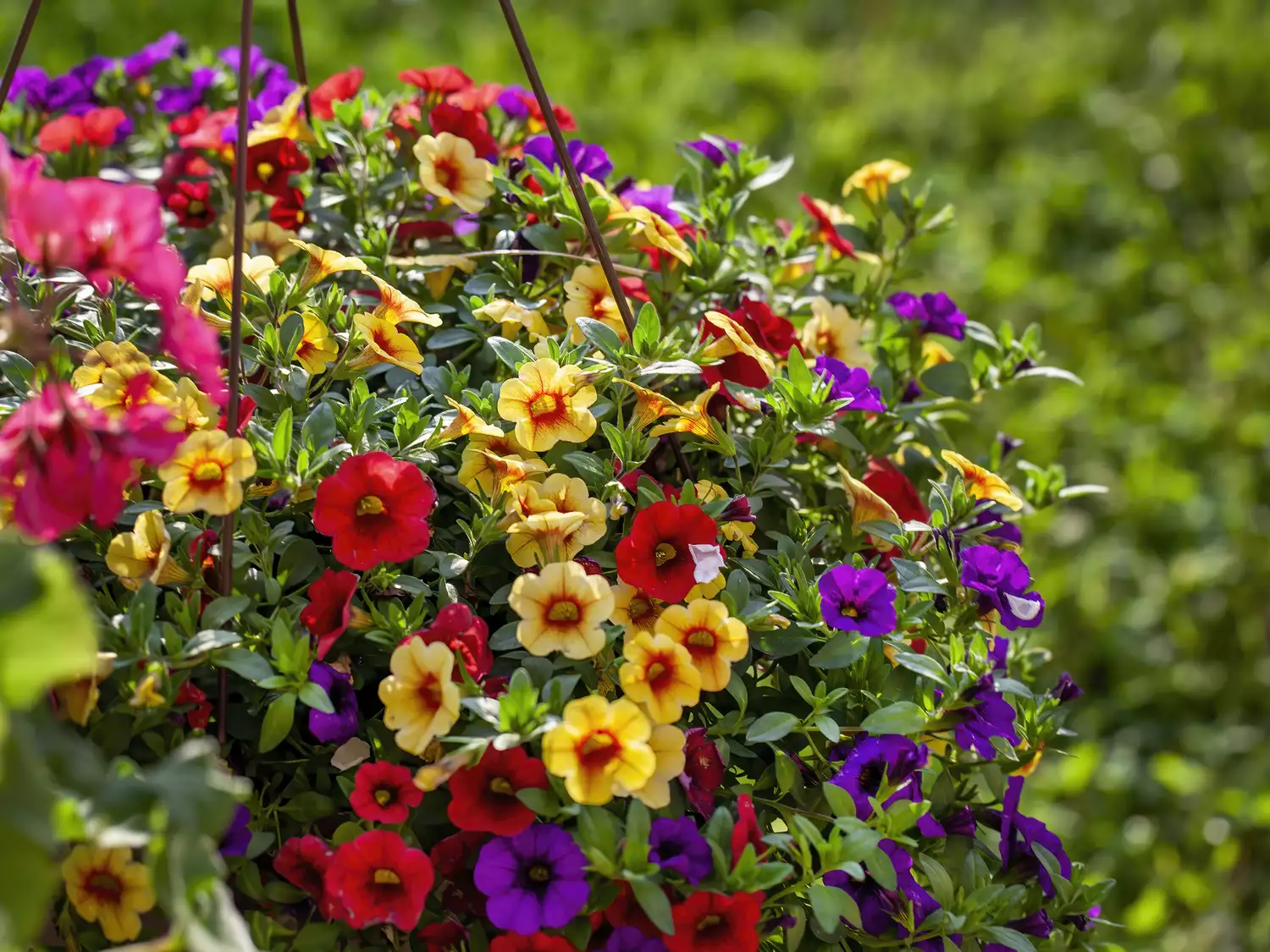
- Botanical Name: Calibrachoa hybrid
- Sun Exposure: Full Sun
- Soil Type: Moist, Well-draining, Rich
- Soil pH: Acidic (5.0-6.2)
Calibrachoa stands up to heat and is drought tolerant, making an ideal selection for baskets hanging in the hot sun. Also called million bells, an apt description of this plant’s flower power, it produces masses of 1/2-inch blooms all summer long without deadheading. Varieties are available in almost every color of the rainbow. Calibrachoa also tolerates partial shade, but flowering will be reduced.
Boston Fern
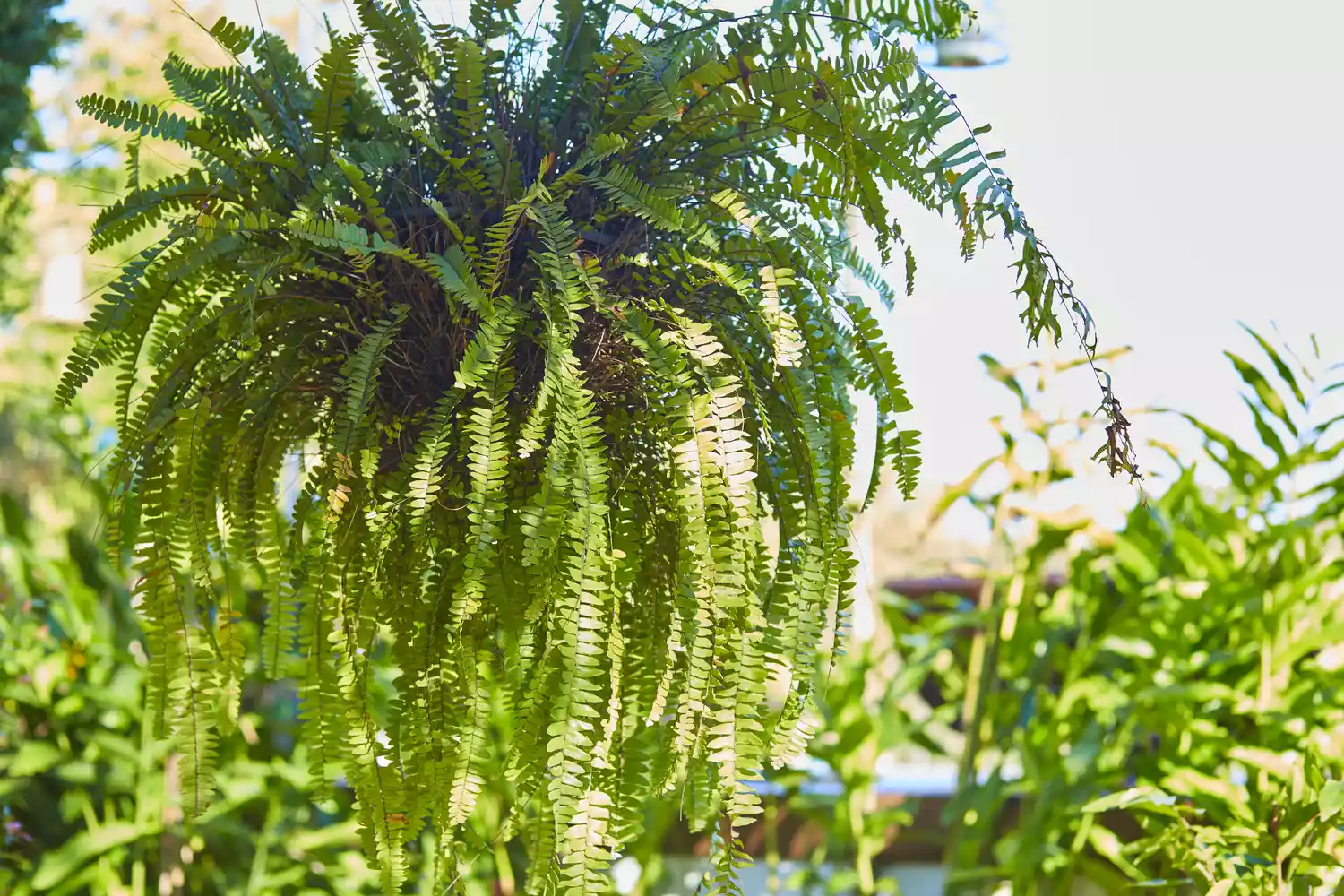
- Botanical Name: Nephrolepis exaltata
- Sun Exposure: Partial Shade
- Soil Type: Moist, Well-drained
- Soil pH: Slightly Acidic (6.0-6.5)
With gracefully arching foliage, this evergreen fern is a staple of Southern porches. Boston fern thrives in heat and humidity, but requires consistently moist soil. Grow in dappled sun to deep shade. In winter, Boston ferns can be grown as houseplants. Keep plants in a humid location, such as a bathroom, or place them on a tray of wet pebbles.
Verbena
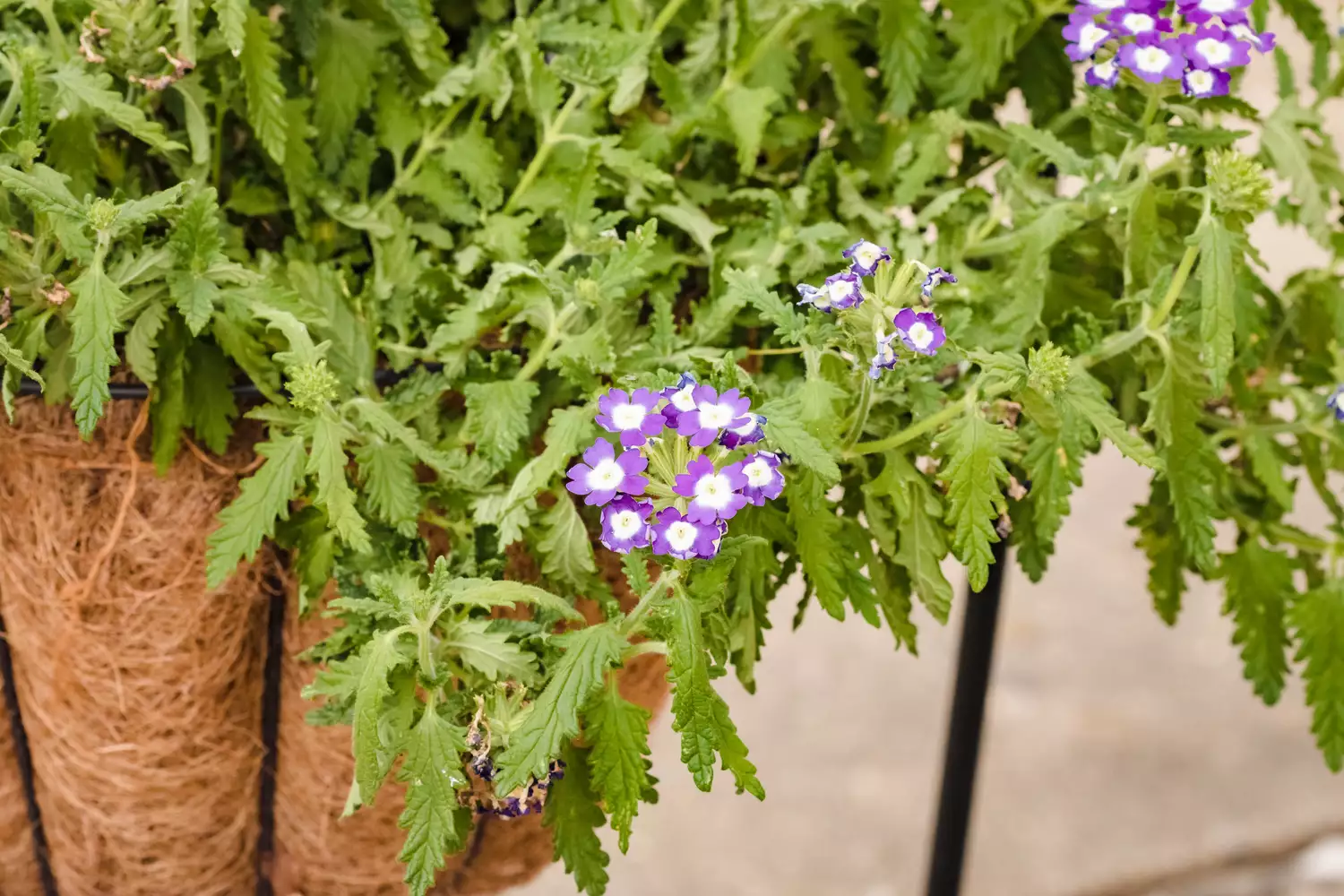
- Botanical Name: Verbena hybrid
- Sun Exposure: Full Sun
- Soil Type: Medium Moisture, Well-draining
- Soil pH: Slightly Acidic to Slightly Alkaline (5.8-7.2)
Verbena is a butterfly favorite, blooming in a range of colors including cool blues and purples, sunny yellow, and rose to red hues. White and bicolor blooms are also common in the trade. Flowers are born in rounded clusters. Remove spent blooms to encourage continuous blooming. Many verbena varieties are both mounding and trailing, filling multiple rolls in a container planting.
Petunia
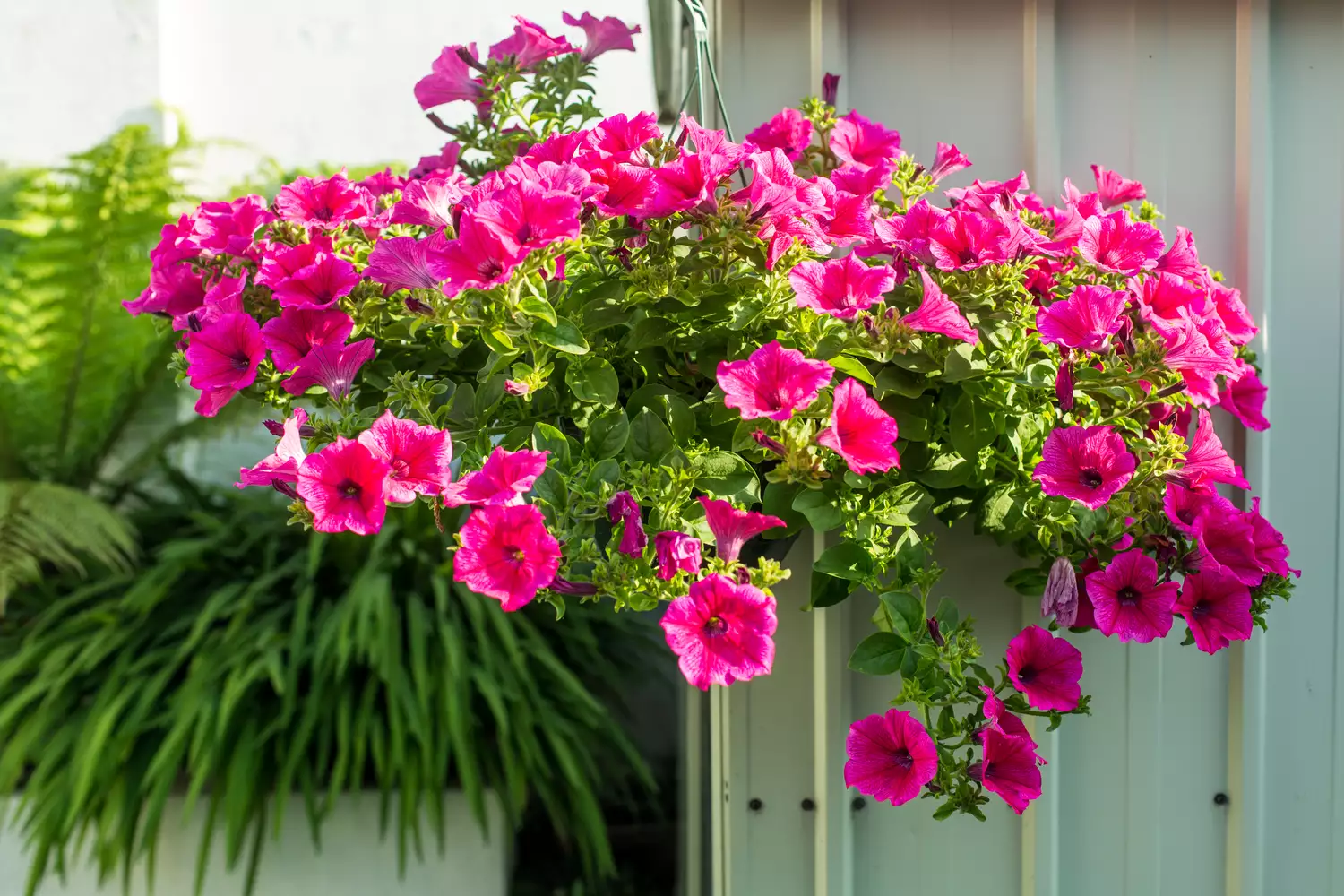
- Botanical Name: Petunia hybrid
- Sun Exposure: Full Sun to Part Shade
- Soil Type: Medium Moisture, Well-draining
- Soil pH: Acidic (5.5-6.5)
One of the most popular annual plants, petunias bloom from spring through frost, attracting butterflies and hummingbirds to the garden. Though plants perform well with little maintenance, deadheading encourages more vigorous blooming. Pinch back plants if they grow leggy. Look for cascading varieties which are best suited to hanging baskets and raised containers.
Silver Ponyfoot
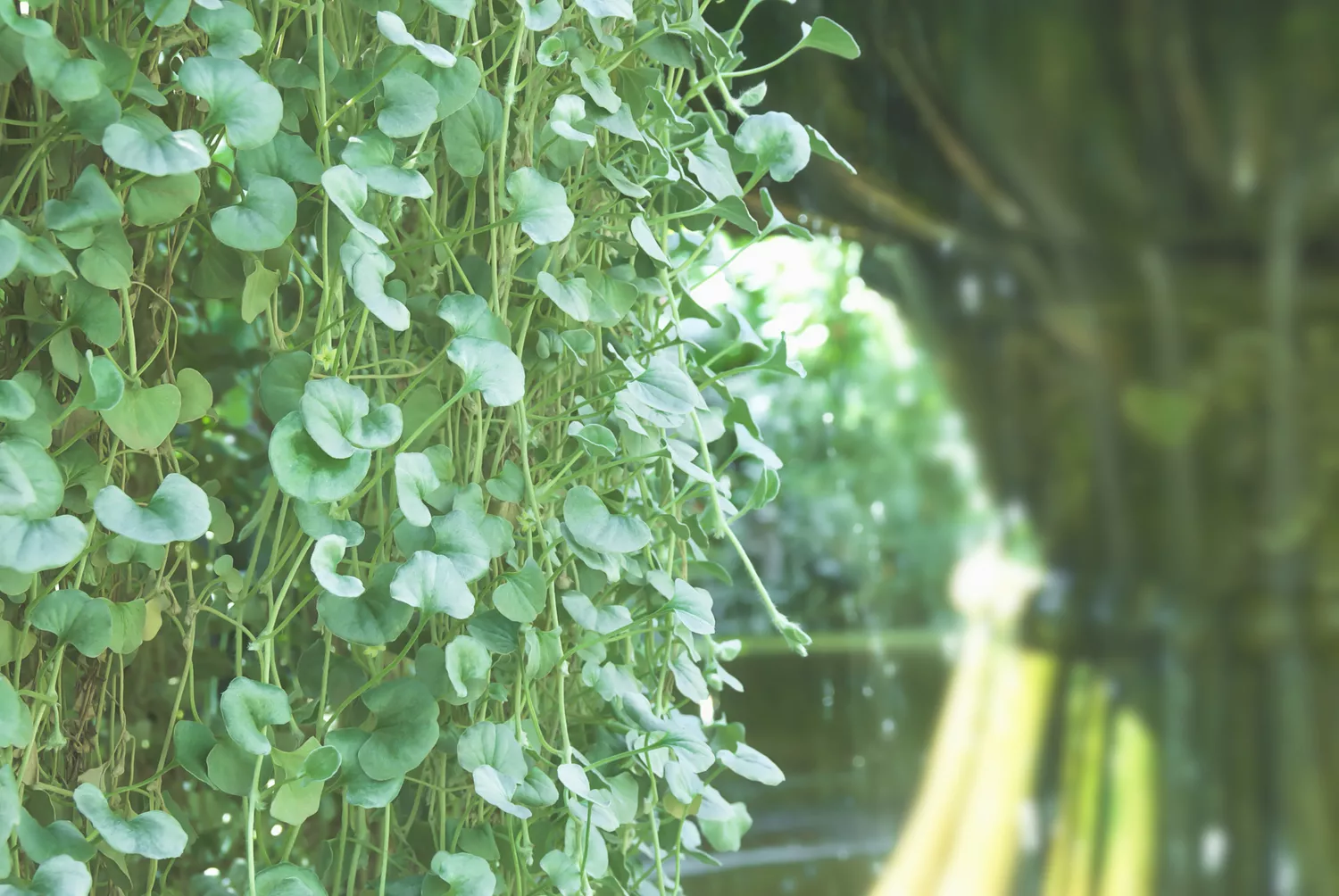
- Botanical Name: Dichondra argentea ‘Silver Falls’
- Sun Exposure: Partial to Full Sun
- Soil Type: Dry to Medium, Well-draining
- Soil pH: Slightly Acidic to Slightly Alkaline (6.0-8.0)
With gorgeous silver foliage, this trailing vine provides texture and contrast to accent flowering companions. Native to the desert southwest, silver ponyfoot stands up to the high heat and dry soils common to hanging baskets growing in our most exposed sites. These vigorous growers may require a haircut mid-summer.
Fuchsia
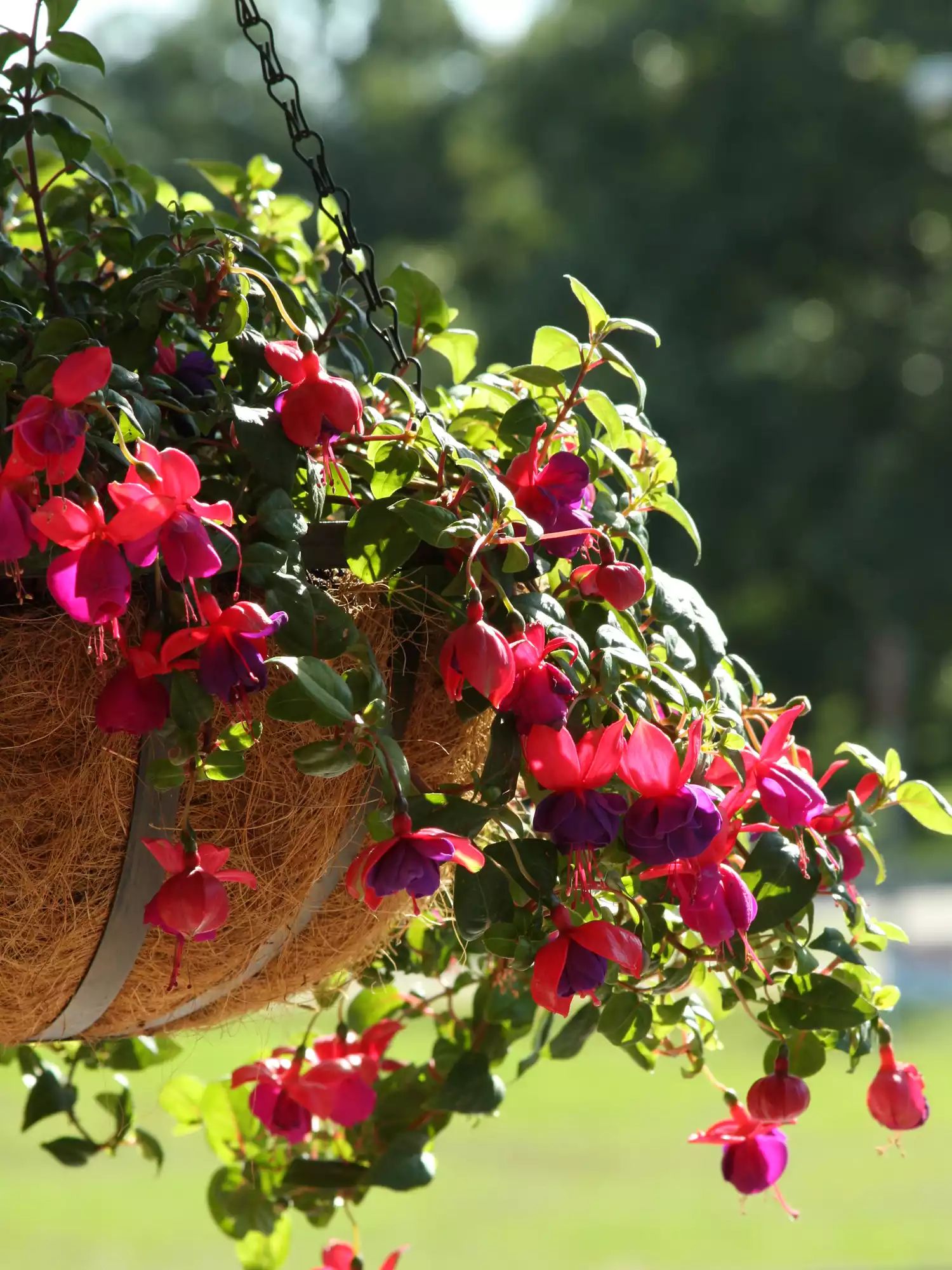
- Botanical Name: Fuchsia species and hybrids
- Sun Exposure: Shade, Part Shade
- Soil Type: Moist, Well-draining
- Soil pH: Neutral to Slightly Acidic (6.0-7.0)
Mother Nature must have designed fuchsias to flow from hanging baskets, with pendulous bicolor blooms dangling their ruffled skirts for hummingbirds to find. The jewel-toned blooms shine in shades of ruby red, velvety purple, and yes, fuchsia. Some are accented with white or pale pink hues. Keep them well watered and protected from the afternoon sun.
Fan Flower
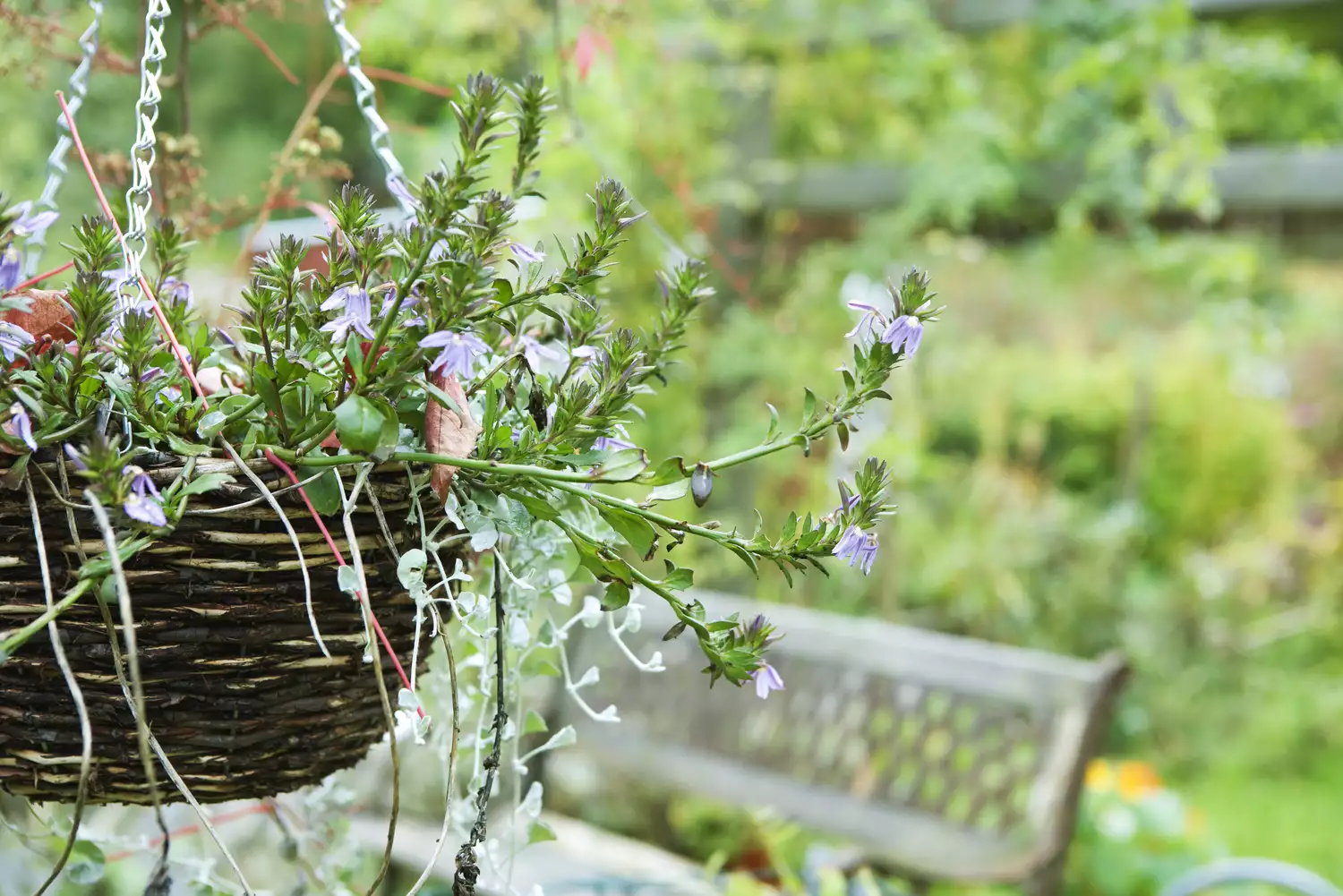
- Botanical Name: Scaevola aemula
- Sun Exposure: Full Sun to Part Shade
- Soil Type: Medium Moisture, Well-draining
- Soil pH: Slightly Acidic to Neutral (6.1-7.3)
Named for its unique blooms, fan flower blossoms non-stop, summer through frost, in shades of purple to deep blue. White and pink varieties are also available. Native to Australia, fan flower thrives in hot, humid weather and tolerates dry conditions. They are a great choice for difficult areas and beginning gardeners.
Purple Spiderwort
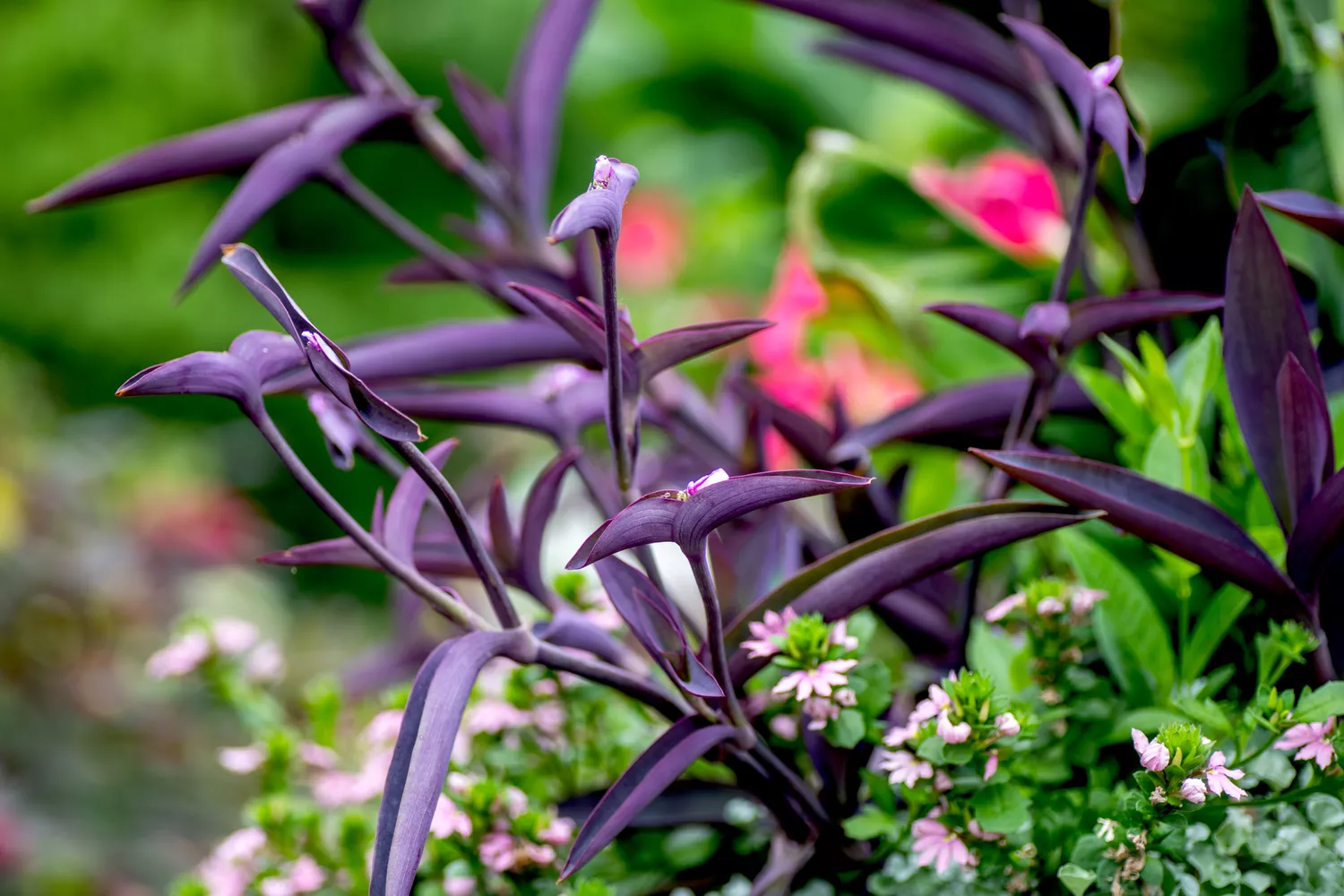
- Botanical Name: Tradescantia pallida ‘Purple Heart’
- Sun Exposure: Full Sun to Part Shade
- Soil Type: Medium to Moist, Well-draining
- Soil pH: Slightly Acidic to Slightly Alkaline (6.0-8.0)
Grown for its striking foliage, purple spiderwort provides a stunning accent to flowering annuals in mixed containers. Plants also make a gorgeous stand-alone planting. Although spiderwort is drought tolerant, plants benefit from protection from the hot afternoon sun. Stems can be pinched back to stimulate more growth as needed.
Begonia Boliviensis
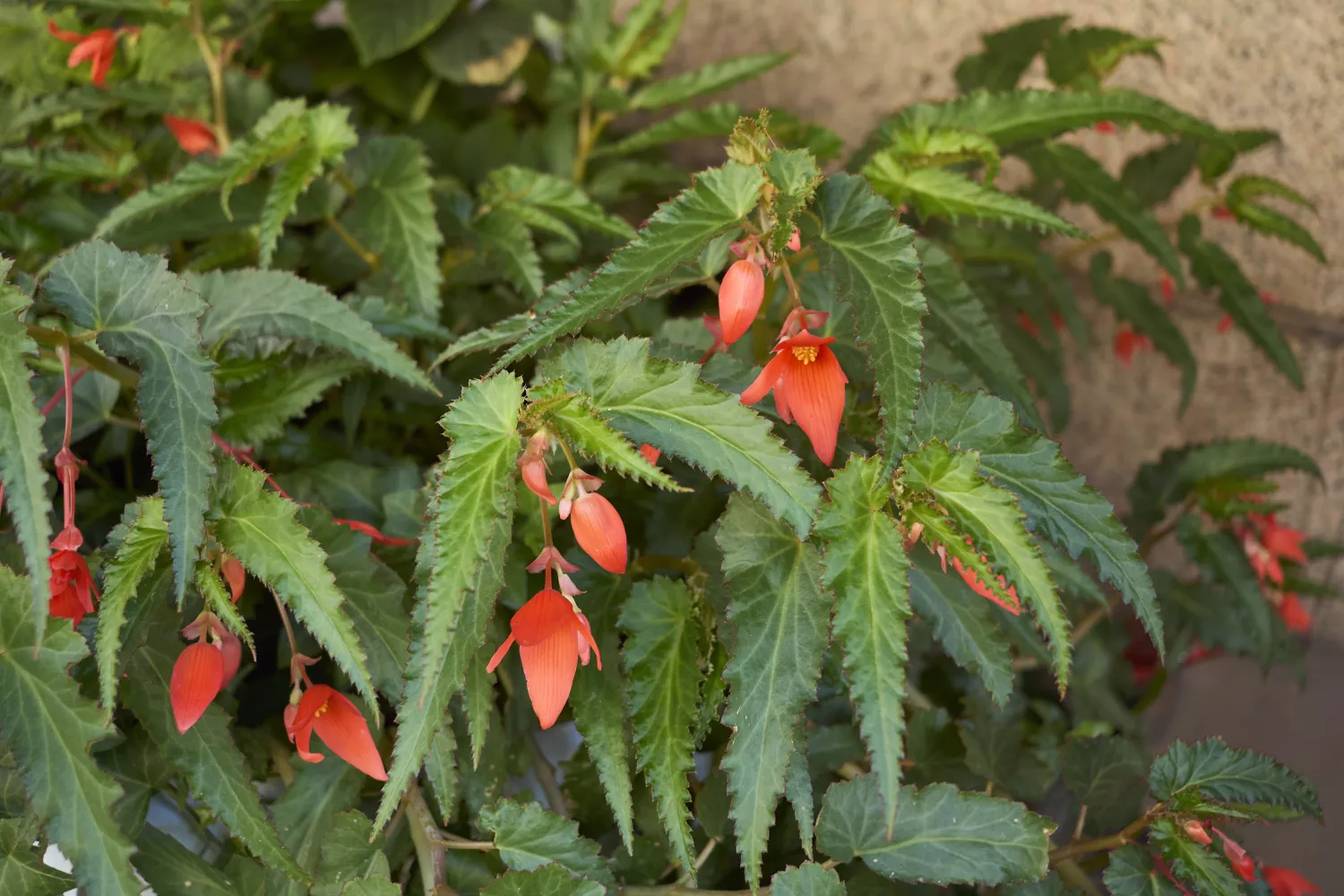
- Botanical Name: Begonia boliviensis
- Sun Exposure: Full Sun to Full Shade
- Soil Type: Moist, Well-draining, Rich
- Soil pH: Slightly Acidic to Neutral (6.1-7.5)
This gorgeous begonia is unlike any other begonia you’ve grown—it tolerates heat, thrives in sun or shade, and shrugs off drought. These traits make it superior to other varieties for life in a hanging basket. And you won’t be disappointed by the blooms. Flowering non-stop in fiery hues, the pendulous flowers have long petals that dance in the breeze. In hot locales, plants perform best in part shade.
Chenille Plant
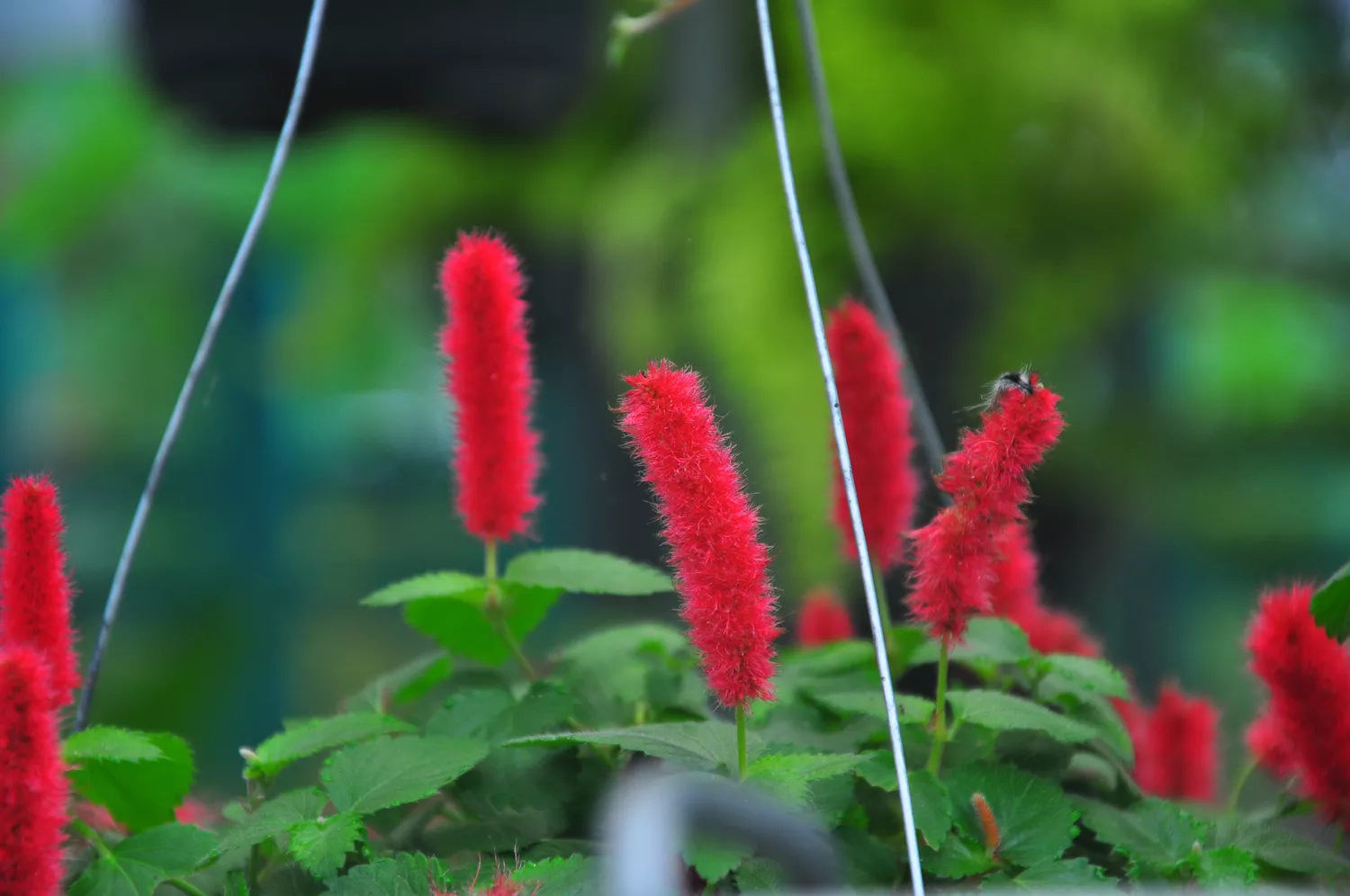
- Botanical Name: Acalypha hispida
- Sun Exposure: Full Sun to Part Shade
- Soil Type: Well-draining, Rich
- Soil pH: Acidic to Slightly Alkaline (5.5-7.5)
Chenille plant lends the garden tropical flair with soft, pendulous blooms reminiscent of a cat’s tail. Each fuzzy bloom dangles up to 18 inches, with deep raspberry pink to bright red hues. The closely related dwarf chenille plant (Acalypha pendula) has plumper and shorter catkins with equally brilliant color. Though both plants are moderately drought tolerant, it is best to avoid direct afternoon sun.
Trailing Lobelia
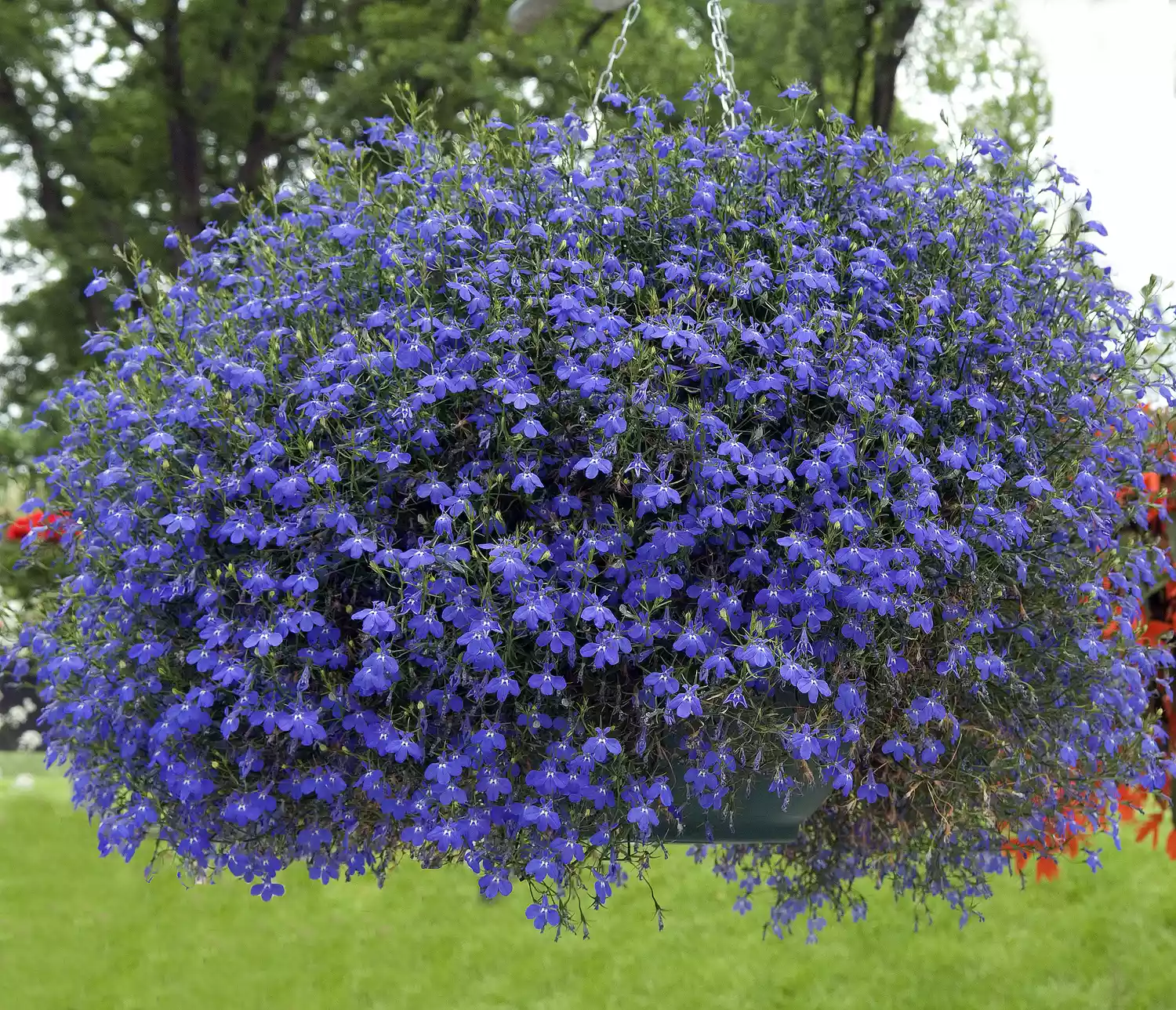
- Botanical Name: Lobelia erinus
- Sun Exposure: Full to Part Sun
- Soil Type: Moist, Well-draining, Rich
- Soil pH: Acidic (5.5-6.5)
Numerous, blue-violet blooms cover plants from late spring to fall, often with a lull during the heat of summer. For this reason, trailing lobelia combines well with flowers like calibrachoa that continue to bloom through the heat. When blooms synchronize, you get a stunning layered effect. Trailing lobelia is a tender perennial, hardy in zones 10-11, though more commonly grown as an annual.
Ornamental Oregano
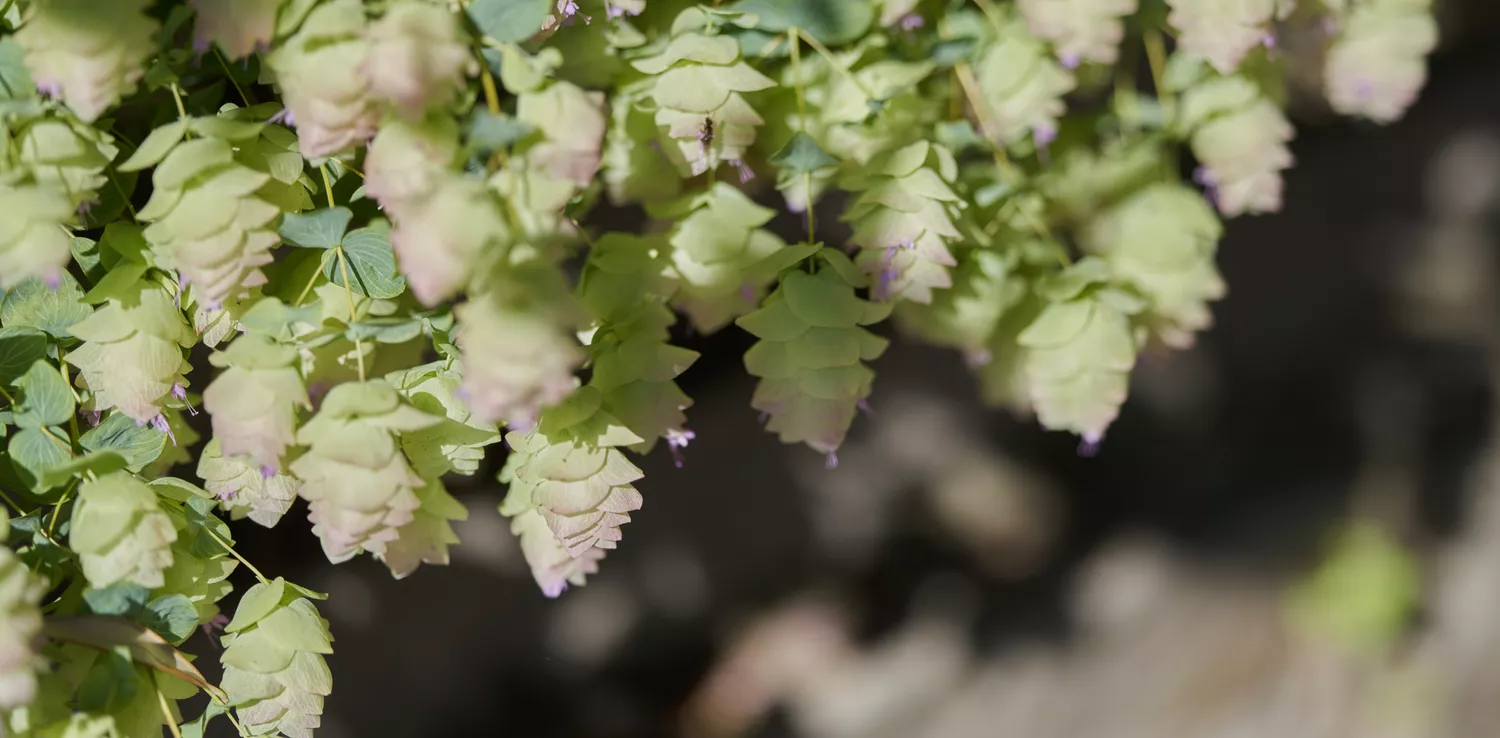
- Botanical Name: Origanum hybrids
- Sun Exposure: Full Sun
- Soil Type: Average to Dry, Well-draining
- Soil pH: Slightly Acidic to Neutral (6.0-7.0)
For gardeners with lower humidity, ornamental oregano makes a stunning solo planting. Fragrant blue-green foliage is accented by unique flowers reminiscent of hops, with papery, rose-pink bracts draping the plant all summer. The blooms are commonly used in dried flower arrangements. Plants are heat and drought tolerant, making them easy to maintain.
Trailing Lantana
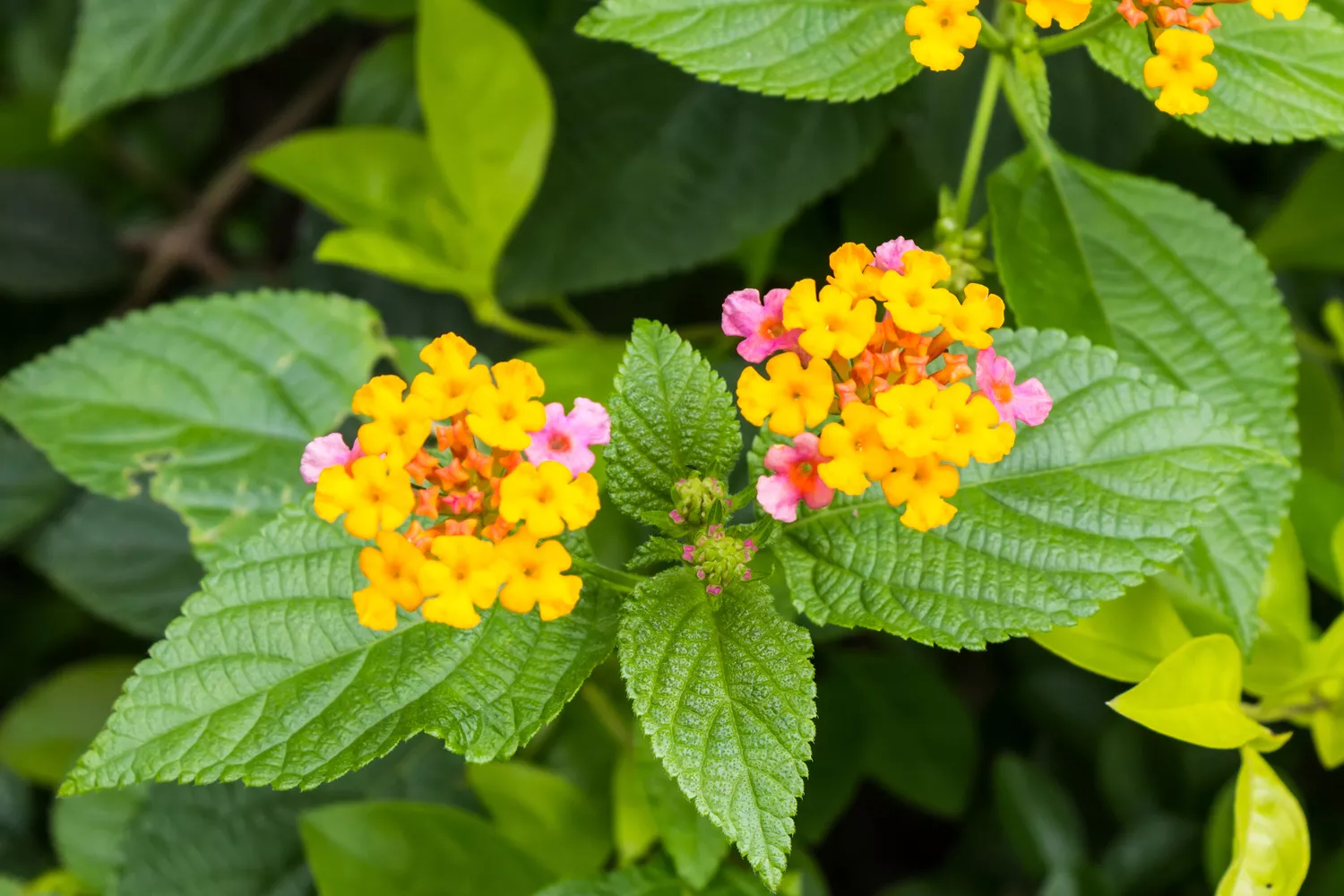
- Botanical Name: Lantana montevidensis
- Sun Exposure: Full Sun
- Soil Type: Dry to Medium, Well-draining
- Soil pH: Slightly Acidic to Slightly Alkaline
Trailing lantana checks all the boxes when it comes to hanging baskets: they are ruggedly adaptable, have a lovely cascading habit, and bloom prolifically. Clusters of lavender to purple-pink blooms with yellow throats attract butterflies and other pollinators. Plants tolerate drought as well as coastal conditions including heat, humidity, and salt spray.
Streptocarpella
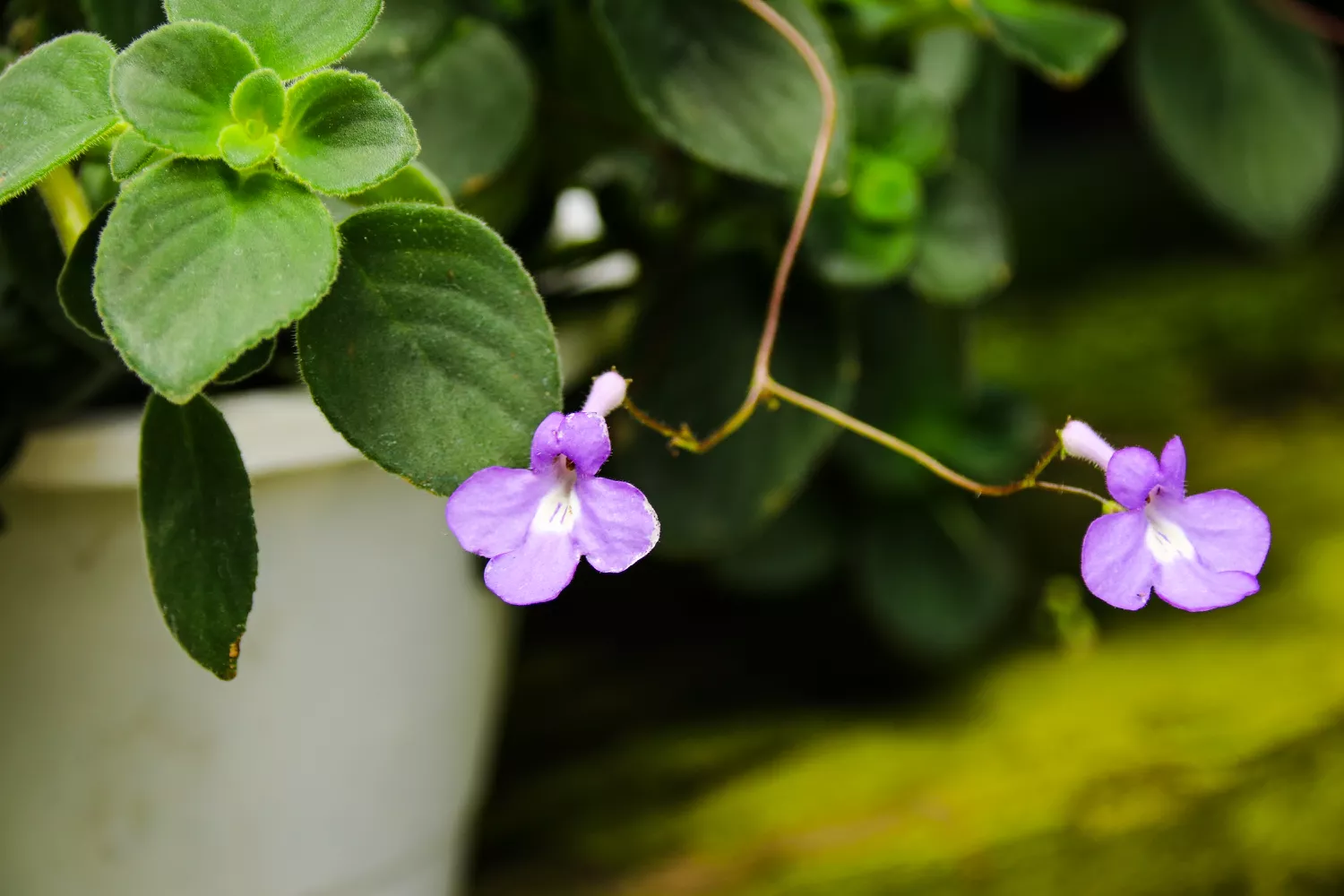
- Botanical Name: Streptocarpus saxorum
- Sun Exposure: Full to Partial Shade
- Soil Type: Moist, Well-draining
- Soil pH: Acidic (5.5-6.5)
Standing up to heat of humidity, Streptocarpella is a gorgeous trailing plant that blooms prolifically in the shade. With plump, fuzzy foliage and lavender, violet-like blooms, this low-maintenance beauty is gaining popularity in the garden. Plants are self-cleaning, blooming all summer long without deadheading. Bring them indoors over the winter and they will keep on blooming.
Tomato
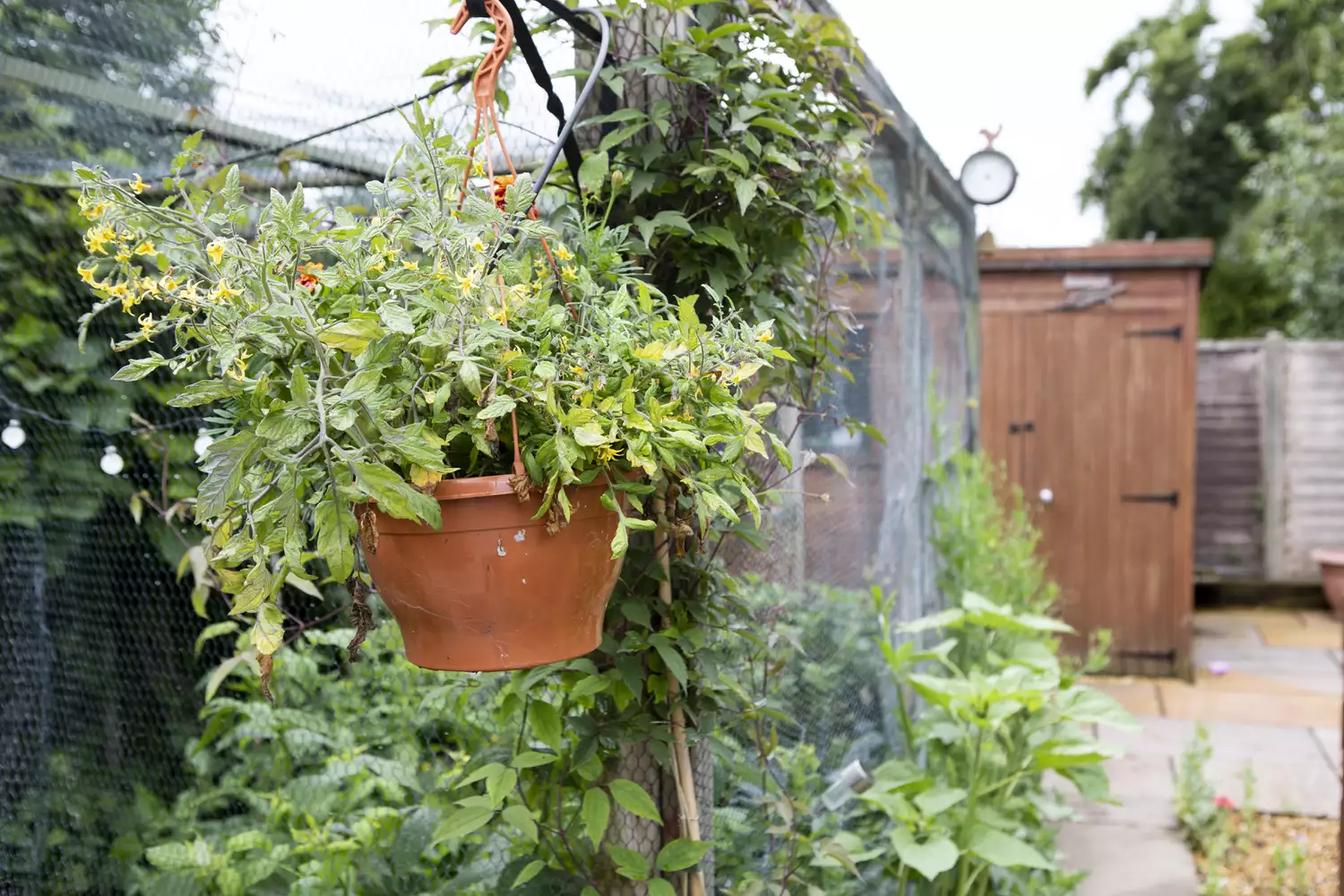
- Botanical Name: Solanum lycopersicum
- Sun Exposure: Full Sun
- Soil Type: Moist, Well-draining, Rich
- Soil pH: Slightly Acidic (5.8-6.8)
Small grape and cherry tomatoes grow well in hanging baskets, with their fruiting branches tumbling over the sides. Some varieties, like ‘Tumbling Tom’ have a cascading habit while others, including ‘Tiny Tim’ have been bred specifically for growing in containers. Make sure to provide a sturdy hook for hanging, as these baskets will get heavy when loaded with fruit.





